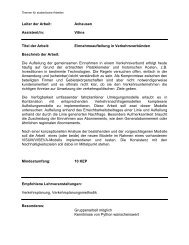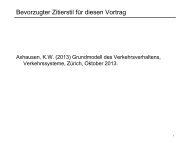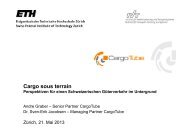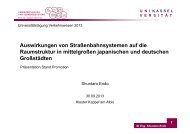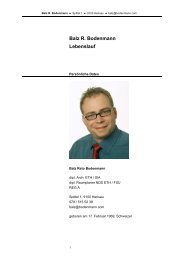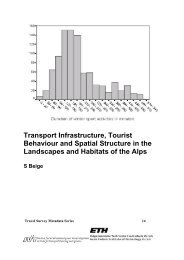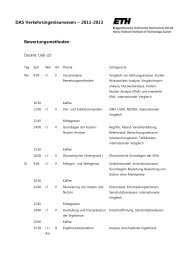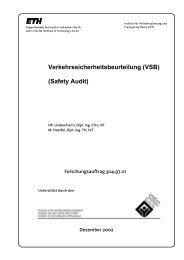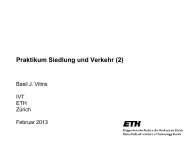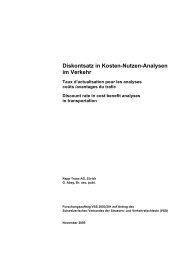A Tour-Based Model of Travel Mode Choice - Civil Engineering ...
A Tour-Based Model of Travel Mode Choice - Civil Engineering ...
A Tour-Based Model of Travel Mode Choice - Civil Engineering ...
Create successful ePaper yourself
Turn your PDF publications into a flip-book with our unique Google optimized e-Paper software.
10 th International Conference on <strong>Travel</strong> Behaviour Research<br />
August 10-15, 2003<br />
account for the possibility that m* is never chosen within the N draws, P is defined as (Ortuzar<br />
and Willumsen, 2001):<br />
P(m*,t,p|β) = [F(m*,t,p|β) + 1] / [N + n t ] [14]<br />
where F(m*,t,p|β) is the number <strong>of</strong> times m* was selected for trip t out <strong>of</strong> the N draws, and n t<br />
is the number <strong>of</strong> feasible modes for trip t.<br />
Since log(P) is not analytically defined, standard gradient-based methods for optimizing [13]<br />
are not directly applicable (cf. Train, 2002). In this application a very simplistic random<br />
search procedure was used in which a large number <strong>of</strong> random parameter sets were generated,<br />
and L(β) was evaluated at each <strong>of</strong> the randomly generated values <strong>of</strong> β. The search area was<br />
systematically reduced in a series <strong>of</strong> stages, centred upon the best parameter set found in each<br />
search stage. Although time-consuming and computationally intensive, the procedure appears<br />
to yield stable results. In particular, given the evaluation <strong>of</strong> a wide variety <strong>of</strong> parameter values<br />
over an (initially) extensive domain, local optima did not pose a discernible problem, and<br />
we are quite confident that the procedure is converging on the global maximum.<br />
Alternative (and probably smarter!) estimation procedures that should be investigated include<br />
using a genetic algorithm to focus the random search, and/or trying to fit a surface to the randomly<br />
generated points so that a quasi-gradient can be computed that might permit some form<br />
<strong>of</strong> hill-climbing procedure to be locally applied. A more detailed discussion <strong>of</strong> the estimation<br />
procedure used in this model, in comparison with other methods, will be presented in a forthcoming<br />
paper by the authors.<br />
8. <strong><strong>Mode</strong>l</strong> Estimation Results<br />
Results for two estimated models are presented in this paper. The first is an iid model in<br />
which the variance <strong>of</strong> µ(m,p) is normalized to 1 for all m. The second model has the same<br />
systematic utility specification as <strong><strong>Mode</strong>l</strong> 1, but has individual variance terms for µ for each<br />
mode m (with the variance for the auto-drive term being normalized to 1.0). Table 2 defines<br />
the variables included in both models. The utility functions employed are relatively simple in<br />
structure and could, <strong>of</strong> course, be further elaborated. Points to note concerning this specification<br />
include the following.<br />
• <strong>Travel</strong> times and costs are generic across modes, with the exception <strong>of</strong> auto and transit<br />
in-vehicle travel times, which have alternative-specific parameters.<br />
• The aggregate zone-to-zone transit assignment used to generate transit travel times<br />
does not generate in-vehicle travel times for intrazonal and adjacent zone trips. While<br />
travel times for these trips were estimated based on origin-to-destination trip distances,<br />
the intrazonal and adjzone dummy variables were included in the model specification<br />
to account for possible biases in these measurements, as well as to capture the possible<br />
systematic disutility <strong>of</strong> using transit for very short trips.<br />
15



